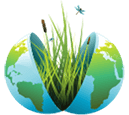Wetlands of Distinction
Recognizing the world's most valuable wetland ecosystems
The Society of Wetland Scientists’ Wetlands of Distinction initiative catalogues high quality wetlands providing exemplary ecosystem services. Detailed information about these wetlands is available on an interactive website with geospatial data. We seek applications for U.S. wetlands already deemed special, rare, and/or unique by agencies or organizations.
